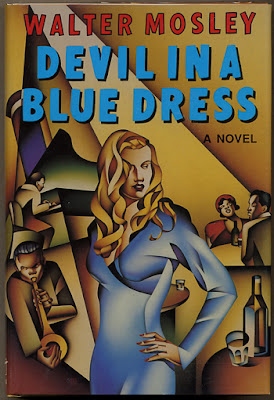Every genre, literature to space opera, has its essentials. Essentials are the books that shape, define, and/or mark the evolution of a genre or the progression of society through the lens of genre. Of course essentials are subject to each person’s taste, values, and development. Fan debates are fun, (Regency Romance folks throw elbows, yo). This is my list. As they say in the Army, it's easy to use, easy to clean. I’d LOVE to debate my picks. Just no elbows. I’m a bleeder.
5. The Hunter
The late-great Donald Westlake, (writing as Richard Stark) took traditional noir into an alley, mugged it. You will not find a more developed, completely understated anti-hero than his master-thief, Parker. In movies, Parker has been played by everyone from Lee Marvin to Jim Brown to Jason Statham. None do justice to the baseline sociopath who only truly comes alive in action. A note on detail: through Parker, Westlake linked sexual dysfunction to heisters about three decades before criminal psychologists made the connection.
4. Devil in a Blue Dress
Devil in a Blue Dress established Walter Mosley as the master of modern PI fiction as well as a master of place in fiction. His Los Angeles, Houston, and New Iberia are not simply backdrops, those places haunt Mosley’s characters like congential illness. His hero, Easy Rollins is a masterclass in what makes a gumshoe: smart, driven by an innate sense of right/wrong, and tough. He is also a black man in 1940s Los Angeles, facing racial violence and exploitation that we still flail to address today.
3. Carlito’s Way/After Hours
Retired Judge Edwin Torres’ literary career only spans three novels. Of the three, Carlito’s Way and After Hours, are the best. You MUST read them together—as tight, terse studies of crime, bookended by one life. Carlito Brigante is relentlessly and compelling in his determination to beat the streets. Older, world-weary, (but no less compelling) ex-con Carlito fights to escape the prison of his past. Torres’ prose is as rich as the Spanish Harlem culture Carlito springs from. You’ll have to dig to find these gems but you’ll be glad you did.
2. The Talented Mr. Ripley
Patricia Highsmith’s brilliant psychopath, Tom Ripley is a killer but only incidentally to his yearning for a life beyond his stagnant existence. Like Hannibal Lecter, Ripley is a cultured intellectual with a taste for life’s finer things. If Ripley lacks Lecter’s education, OCD-levels of focus, and self-possession he makes up for it in grueling envy, paranoia, and ruthless determination. In short he’s far-more one of us than Dr. Lecter. Highsmith uses suspense, dread, and yearning to hammer Ripley in a psychological crucible. She hammers the reader too. I can’t tell you when I went from disdain, to grudging respect, to outright rooting for Ripley. That’s how light her touch is. Side note, with Ripley’s world-wide acclaim, a whole generation of LGBTQ folx got an anti-hero who reflected the persecution and dread they live with on a daily basis.
1. The Friends of Eddie Coyle
George Higgins wrote over two dozen books from crime to baseball to politics. The Friends of Eddie Coyle was his first novel and remains his best. It is perhaps the most important work on this list. Like the United States in 1970, (the year of publication) Eddie Coyle is at a crossroads. In his own words, he’s “listened to the stories, eaten the hotdogs, and drank the bad coffee,” as a sideman and small-time hood. But Eddie is facing the downhill with little to show for his life as a “stand-up guy.” After a conviction for running stolen freight, Eddie is trying to dodge prison by giving up small-timers like himself to a tooth-chipping ATF agent. All the while he’s shielding a crew of heavy-hitters, (his customers in a gun-running hustle). There’s a reason why writers from Robert B. Parker to Elmore Leonard name check The Friends of Eddie Coyle in their books, Eddie is the hood we’re most likely to meet on the street, if not in our own family.
I own none of the photos above. All are used for educational/illustrative purposes as covered by the Fair Use Doctrine.








No comments:
Post a Comment